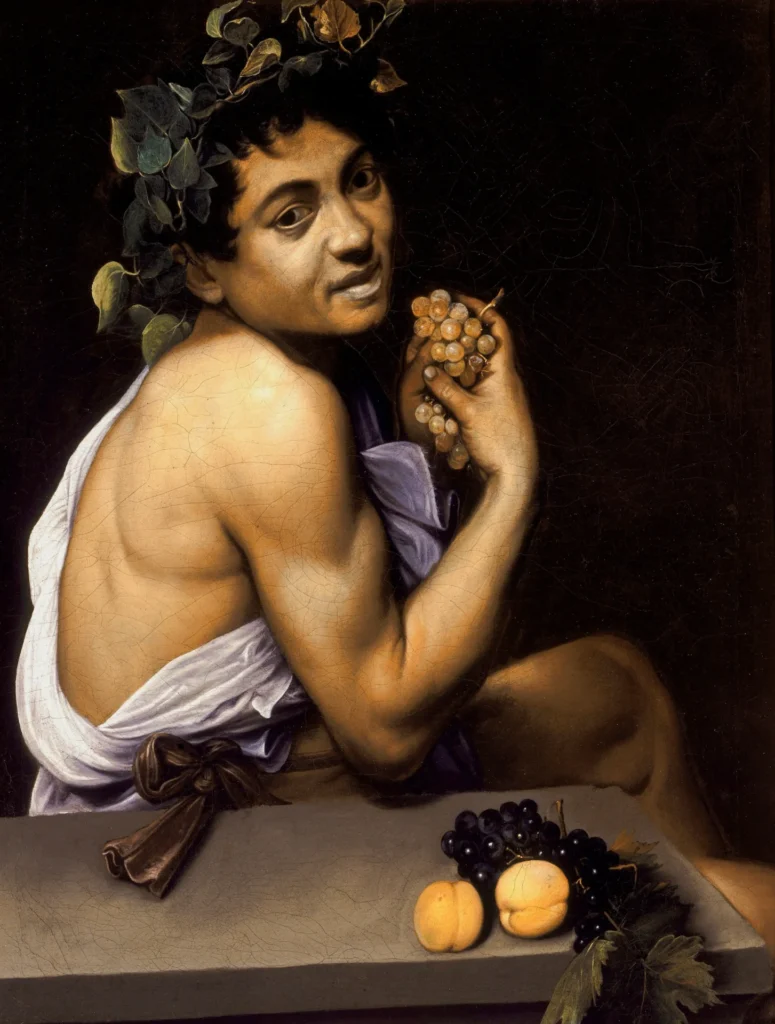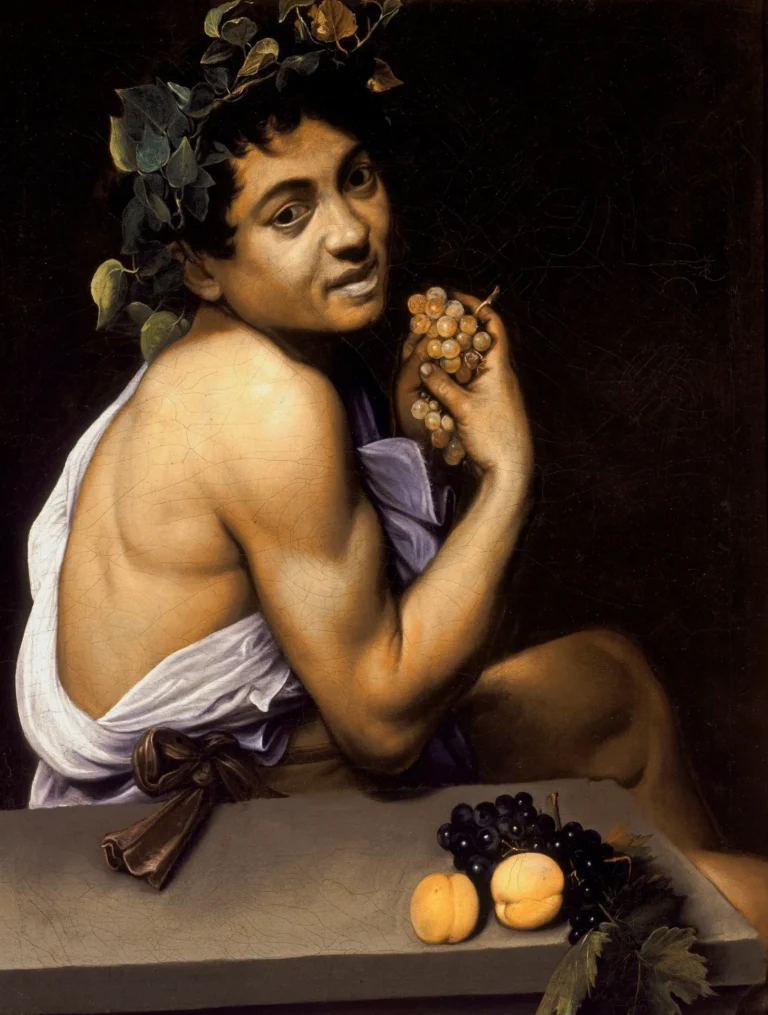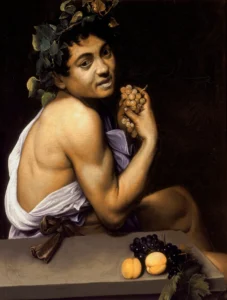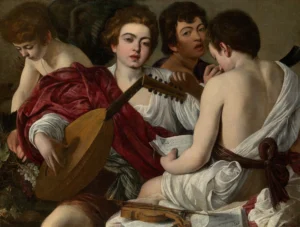Young Sick Bacchus (circa 1593)
Young Sick Bacchus. also known as 'Sick Bacchus' or 'Self-Portrait as Bacchus,' is an evocative early work by Michelangelo Merisi da Caravaggio created between 1593 and 1594. This painting presents Caravaggio as the Roman god Bacchus, showcasing his ill health marked by yellow skin and jaundiced eyes, reflecting his own struggles with illness during this period. It features a combination of still-life elements, such as grapes and peaches, and an innovative portrayal of human emotion typical of the Baroque style.
1593 - 1594
About the Artwork
This painting was conceived during Caravaggio's formative years in Rome, shortly after his move from Milan. Caravaggio fell gravely ill, spending six months in the Santa Maria della Consolazione hospital, possibly suffering from malaria. His experiences are woven into the fabric of Young Sick Bacchus. melded with classical mythology as he depicted himself as Bacchus. The unconventional use of an ivy wreath and the subject's gaunt appearance serve as potent symbols of his physical decline, while the sophisticated execution signals Caravaggio's burgeoning talent.
Did You Know
Liked what you see? Add it to your collection.
Enjoyed reading? Share it.
... continued
History and Context
This painting dates back to Caravaggio's initial years in Rome, following his move from Milan in mid-1592. During this period, Caravaggio fell severely ill and spent six months in the hospital of Santa Maria della Consolazione. The illness is often speculated to be malaria, given the jaundiced appearance of the skin and the icterus in the eyes, which are indicative of hepatic disease.
Self-Portrait and Symbolism
The painting is widely believed to be a self-portrait of Caravaggio, depicting him as the Roman god Bacchus. However, the iconography presents some inconsistencies, such as the use of an ivy wreath instead of the traditional grape leaves or vine leaves associated with Bacchus. This has led some to suggest that the figure might also be interpreted as a satyr or an elegiac poet, given the ivy's significance in those contexts.
Physical Appearance and Health
The subject in the painting appears unhealthy, with yellow skin and icterus in the eyes, along with bluish lips, all of which are symptoms that could be associated with various illnesses, including malaria, hepatitis, or syphilis.
Style and Technique
The painting showcases Caravaggio's early virtuosity in genres such as still-life and portraiture. It features a three-quarter pose, which was common in late Renaissance portraiture, but the grimace and tilt of the head add a sense of suffering characteristic of Baroque art. The still-life elements, including grapes and peaches, are less refined compared to his later works, reflecting his physical and mental state at the time.
Provenance
The painting was initially part of the collection of Giuseppe Cesari, one of Caravaggio's early employers. It was later confiscated by Pope Paul V due to tax evasion and given to his nephew, Cardinal Scipione Borghese, in 1607. It has remained in the Borghese collection ever since.
Significance
Young Sick Bacchus is not only an important early work by Caravaggio but also a piece that highlights his ability to blend autobiographical elements with classical themes. The painting's complex symbolism and the artist's use of himself as a model underscore his innovative approach to art.










